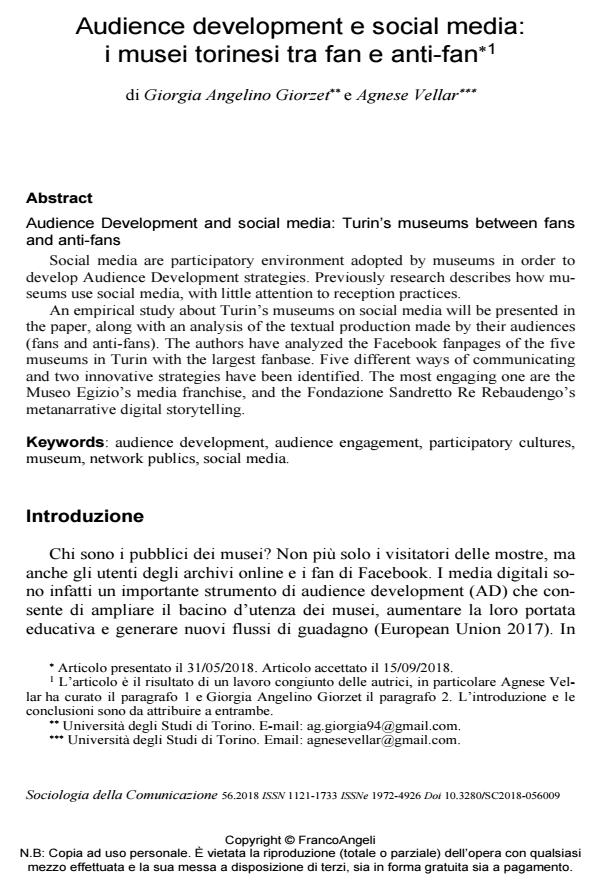Audience Development and social media: Turin’s museums between fans and anti-fans
Journal title SOCIOLOGIA DELLA COMUNICAZIONE
Author/s Giorgia Angelino Giorzet, Agnese Vellar
Publishing Year 2018 Issue 2018/56
Language Italian Pages 24 P. 141-164 File size 934 KB
DOI 10.3280/SC2018-056009
DOI is like a bar code for intellectual property: to have more infomation
click here
Below, you can see the article first page
If you want to buy this article in PDF format, you can do it, following the instructions to buy download credits

FrancoAngeli is member of Publishers International Linking Association, Inc (PILA), a not-for-profit association which run the CrossRef service enabling links to and from online scholarly content.
Social media are participatory environment adopted by museums in order to develop Audience Development strategies. Previously research describes how museums use social media, with little attention to reception practices. An empirical study about Turin’s museums on social media will be presented in the paper, along with an analysis of the textual production made by their audiences (fans and anti-fans). The authors have analyzed the Facebook fanpages of the five museums in Turin with the largest fanbase. Five different ways of communicating and two innovative strategies have been identified. The most engaging one are the Museo Egizio’s media franchise, and the Fondazione Sandretto Re Rebaudengo’s metanarrative digital storytelling.
Keywords: Audience development, audience engagement, participatory cultures, museum, network publics, social media.
- New Metropolitan Perspectives Francesco Calabrò, Giuseppina Cassalia, Paolo Fragomeni, Immacolata Lorè, pp.289 (ISBN:978-3-031-06824-9)
Giorgia Angelino Giorzet, Agnese Vellar, Audience development e social media: i musei torinesi tra fan e anti-fan in "SOCIOLOGIA DELLA COMUNICAZIONE " 56/2018, pp 141-164, DOI: 10.3280/SC2018-056009